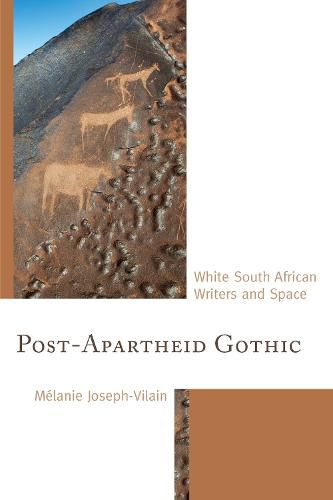Readings Newsletter
Become a Readings Member to make your shopping experience even easier.
Sign in or sign up for free!
You’re not far away from qualifying for FREE standard shipping within Australia
You’ve qualified for FREE standard shipping within Australia
The cart is loading…






Post-Apartheid Gothic: White South African Writers and Space analyses the representation of space in recent works by South African writers. By combining analytical tools borrowed from Gothic studies with geocritical and postcolonial approaches, the author tries to assess and understand the literary mechanisms utilized by Damon Galgut, Henrietta Rose-Innes, Lauren Beukes, Justin Carwright or Lynn Freed to negotiate the complexities of post-apartheid identities in their fiction. The author argues that the literary representations of emblematic places, real or imagined (the home, the farm, the city or the non-places of dystopia) express and reveal anxieties linked to the sharing of space in post-apartheid South Africa. She has chosen to successively (re-)visit the places which have been shaping South African white writing since Olive Schreiner’s African Farm - in other words, its topoi, both in the etymological sense of place and in the literary sense of recurring themes or arguments. She argues that these Gothicized topoi have provided writers with tools to explore the deep anxieties generated by the redefinition of South African society as the Rainbow Nation. Even if she focuses on the specifically South African avatars of the Gothic and their interaction with local forms and genres, like the plaasroman, she also discusses the impact of globalization on South African literary, cultural, social and political identities.
$9.00 standard shipping within Australia
FREE standard shipping within Australia for orders over $100.00
Express & International shipping calculated at checkout
Post-Apartheid Gothic: White South African Writers and Space analyses the representation of space in recent works by South African writers. By combining analytical tools borrowed from Gothic studies with geocritical and postcolonial approaches, the author tries to assess and understand the literary mechanisms utilized by Damon Galgut, Henrietta Rose-Innes, Lauren Beukes, Justin Carwright or Lynn Freed to negotiate the complexities of post-apartheid identities in their fiction. The author argues that the literary representations of emblematic places, real or imagined (the home, the farm, the city or the non-places of dystopia) express and reveal anxieties linked to the sharing of space in post-apartheid South Africa. She has chosen to successively (re-)visit the places which have been shaping South African white writing since Olive Schreiner’s African Farm - in other words, its topoi, both in the etymological sense of place and in the literary sense of recurring themes or arguments. She argues that these Gothicized topoi have provided writers with tools to explore the deep anxieties generated by the redefinition of South African society as the Rainbow Nation. Even if she focuses on the specifically South African avatars of the Gothic and their interaction with local forms and genres, like the plaasroman, she also discusses the impact of globalization on South African literary, cultural, social and political identities.